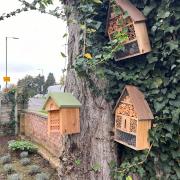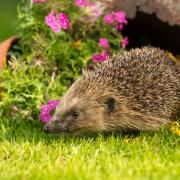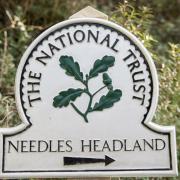It’s a cold January morning and frost clings to the grass and tree branches in the garden. A small bird with bright blue, yellow and white plumage zooms like a rocket onto the hanging feeder, taking a seed before dashing off to the cover of the tree to consume it. That was a blue tit. Then a robin appears on the bird table and a male blackbird, with striking black feathers and yellow bill, scurries along the lawn. Watching these birds, I’m not only absorbed into their world for an hour, but I’m also contributing to the largest garden wildlife survey in the world!
Noticing a robin singing or a blackbird searching for earthworms in our gardens are daily sights we might take for granted. However, our garden birds are facing increasing challenges from extreme weather to habitat loss. The RSPB’s Big Garden Birdwatch survey is therefore an important moment in the year, as the results help provide an insight into garden bird populations, showing how they are faring across the UK.
The Birdwatch is an annual citizen science survey that takes place in January every year, this year it’s on January 26, 27 and 28.

People across the UK spend one hour watching and counting the birds that land in their garden, balcony or local park, then submit their results to the RSPB. It’s as simple as that! Even if you record no birds at all, it’s all valuable data. In 2023, over half a million people took part and counted more than 9 million birds! The Birdwatch is open to everyone, and when you sign up you’ll receive a free bird identification chart to help you recognise different species.
Excitingly, 2024 marks the 45th year since the survey began in 1979. This incredible timeframe means the RSPB has collated a huge amount of data submitted by members of the public. Over this time, 185 million birds were counted and nearly 11.5 million hours were spent watching garden birds. This volume of information allows trends in garden bird populations to be discovered that otherwise might go unnoticed. House sparrows, for example, in 2023 celebrated their 20th year as the most spotted bird in UK gardens. Nearly 1.5 million were recorded. However, very sadly this species has experienced severe population declines, with the numbers seen in gardens decreasing by nearly 60% since the Birdwatch began.

Although garden birds are under pressure from large-scale factors like climate change, there are ways we can help them in our very own gardens. You can put out feeders or food on bird tables that will help birds during periods when natural food sources are low. It’s important to remember to regularly clean feeding stations with a mild disinfectant, we recommend doing this outside wearing gloves, to help reduce any diseases spreading. Filling feeders with food that lasts up to two days is ideal and moving them around helps to stop any food waste building up in one area. Along with food, fresh water will also be appreciated by your garden wildlife visitors. You can also put up bird boxes so species have space to raise a family. There’s plenty to choose from, including sparrow boxes and homes for blue tits. Head to the RSPB shop for inspiration at shopping.rspb.org.uk/home
Sign up to take part in the Big Garden Birdwatch to receive your free Birdwatch guide at rspb.org.uk and help birds thrive for generations to come.
The Top 10
Over 9 million birds were recorded in the 2023 Big Garden Birdwatch across the UK.
1. House Sparrow
2. Blue Tit
3. Starling
4. Woodpigeon
5. Blackbird
6. Robin
7. Goldfinch
8. Great tit
9. Magpie
10. Long-tailed tit


























